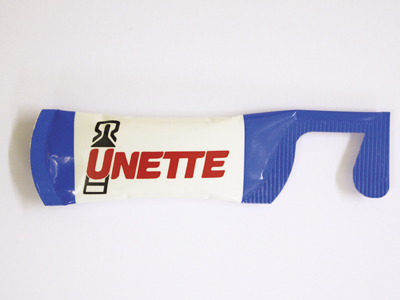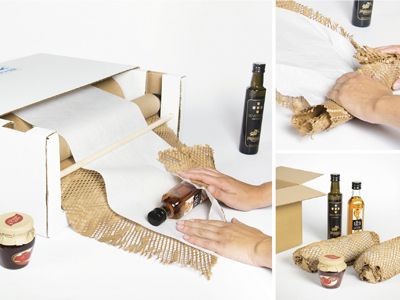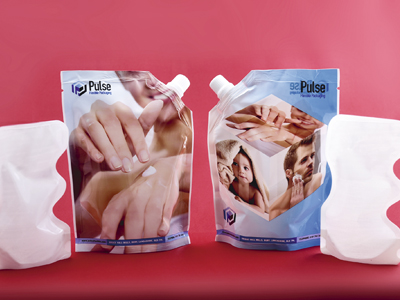Shaped and spouted pouches from Pulse Flexible Packaging
The retail supply chain found plenty of reasons to be cheerful at this year’s Packaging Innovations showcase event at the NEC, reports Des King.
The aisles were as busy as ever throughout last month’s Packaging Innovations event (NEC, Birmingham: 1-2 March) with visitors drawn from right across the retail supply chain intent upon checking out the latest solutions on offer from around 300 exhibitors. As well as a shop-window for materials and machinery this annual event provides a uniquely reliable barometer reading of the prevailing mood within the packaging industry and an indicator of conditions likely to prevail over the coming months.
With plenty of new ways of addressing old issues on show, the forecast for the year ahead is set fair. However, brand owners were urged to ensure that innovation be tailored to meet the requirements of the matter in hand rather than applied for its own sake. Nor need innovation have to be totally new, said M&S primary foods packaging technologist Kevin Vyse. ‘It’s a widely-shared view that by innovation we mean ‘game-changer’; by implication something that hasn’t been done before. However, as most healthy businesses are already doing incremental innovation as a matter of course what we really mean in fact is the ‘stretch’: small step changes that refresh but not necessarily re-invent.’
There are two main ground-rules to be observed in charting the progression from innovative concept to presence on-shelf, adds Mr Vyse. ‘When you think you have a great idea for a new pack you should first of all ask yourself what was the consumer insight that led you to believe that your idea is better than any of the other ideas that are aimed at solving the problem and what is the problem that you’re trying to solve anyway. Consumers need to understand it quickly, otherwise they won’t buy it. Secondly, is it commercially viable, actually producible and if so how then long will it take to get it to market? Innovation has to have integrity; it can’t just be so much fluff.’
Squaring the circle
These aren’t the only criteria helping to shape innovation and that are of concern to M&S, as well as a growing number of other retailers and brand owners. Less obvious but fast gaining in importance is the extent to which new packaging applications – and in particular polymer-based – meet the requirements of the circular economy model.
According to the Ellen MacArthur Foundation, the UK is only recycling about 14 per cent of the 270,000 tonnes of plastic packaging it uses each year. The aim is to increase this to 70%. Meanwhile, however, M&S is taking a long, hard look at the remaining 30% which is largely made up of flexo-printed flexible and non-reusable packaging viz individual shampoo sachets, sweet wrappers etc that’s destined for landfill or incineration, notes packaging technologist Laura Fernandez. ‘We cannot work in isolation in silos; this is something that needs a complete systems approach from design to recycling. Otherwise, waste will never be perceived as a valuable resource.’
To this end, M&S is now actively exploring the possibility of a single-polymer solution to meet all of its plastic packaging requirements – and for which the criteria would be full recyclability; sustainable sourcing; and of course superior barrier and, protection properties. It’s a highly commendable aspiration that’s very much in the spirit of ‘Plan A’, and whilst still some way off the most likely candidate would currently appear to be 100% biobased PEF (polyethylene furanoate).
Whilst the onus of responsibility for adopting a more sustainable packaging strategy rests in the main with brand owners and converters, consumer opinion could be an important factor although that might be expressed in a less direct way, suggests Kevin Vyse. ‘Does it really matter that the consumer doesn’t yet know what the circular economy is? I don’t think it’s important. What is, however, is that we make things simple for them and we offer them alternative value propositions they cannot refuse.’
In the meantime, a combination of social media and celebrity influence is gradually bringing some pressure to bear; for example, the attention being focused upon the escalating tonnage of plastic debris in the world’s oceans (predicted to out-number the volume of fish by 2050); the adoption of spent PET soft drinks bottles to produce Levi jeans; high profile TV and national newspaper campaigns mounted by Hugh Fearnley-Whittingstall; and the recent pronouncement by Will I. Am that: ‘waste is only waste if we waste it.’
Flexo is upbeat
Flexo converters and suppliers at the Packaging Innovations show were uniformly positive about future prospects; for example,Constantia Flexibles, which invested €4 million in additional narrow-web capacity at its Burgos (Spain) Tobepal plant last year to meet increased demand for foil-based flexible packaging; a firm confirmation of the strong hold the process continues to maintain across the pharmaceutical, home and personal care, and food industries.
‘Some of our flexo business could run over 24 hours at 500-600m/hr,’ said Pulse Flexible Packaging’sproduct development manager Chris Demain, noting that almost two-thirds of the Bury-based converter’s output is currently flexo-printed due to the process’s lower origination costs. Pulse is actively extending its remit within its ‘Triple P’ stand-up pouch sector through the development of spouted and innovatively shaped SUPs. Achieving up to a 50 per cent weight reduction over standard HDPE containers, Pulse is targeting rice and fine powder product applications as well as the more obvious beverages sector. ‘It’s about having the right technology; the key component is the shaping tool and having that cutting capability on your pouch machine,’ notes Mr Demain. ‘We don’t have that right now so whilst we’re making the pouches we’re working with a partner supplier to produce the special shapes and the spouts.’
Flexo also represents well over 50 per cent of software solutions developer Hybrid’s annual business, confirms UK & Ireland sales Manager Paul Bates. ‘It’s easily our single biggest market sector; especially repro houses. We compete on technology and innovation; also the flexibility to meet specific customer requirements. We’re the only software developer to offer an Enterprise system. Suppose the customer has four or five plants but is buying one workflow, then we will distribute the licence to the other plants as and when there and for as short a time as it’s needed. So we’re moving the licence instead of sending the files up and down the chain; it’s a key point of difference.’
Flexo received some arguably unexpected support during The Big Print Debate, despite it being primarily focused on the transition of digital into a mainstream print process. Critiquing the hugely successful ‘Share a Coke’ campaign of a couple of years ago, Coca-Cola’s packaging engineer Greg Bentley noted: ‘Share a Coke’ unlocked a capability that previously couldn’t exist, but it costs money. At the last count it had got up to 8 billion labels, but if there’d been a print process with a 5m repeat length we wouldn’t have used digital printing.
‘If digital is adding something that analogue doesn’t give you then there’ll always be money found to pay for it. But if digital wants to replace analog then it has to meet those same prices; there’s no other way of doing it. Right now, for us it’s still mostly a promotion-based process given that we’re all aboutproducinglarge volumes of bottles at very high speed over long periods of time.’
Whilst also singling out digital’s short-run capabilities, debate co-panellist Will Parker, general manager ofEssentra Packaging, noted the incremental improvements that flexo had made in that context. ‘Digital has actually driven an improvement in analog, which is heading in the same direction in terms of a significant reduction in makeready. The time has passed when a digital press could produce a job faster than it was taking to get flexo plates ready; that’s no longer the case.’
What’s in-store?
Three notable packaging innovations making their first appearance during the show were:
New from Aegg is a microwavable soup or pasta high-clarity PP container, whose tear and lift lid can be fully removed or half opened for stirring and whose ‘teardrop’ shape provides extra rigidity and steam protection when pouring. The tear has to be sufficiently strong to allow the fold, but at the same time weak enough to enable the consumer to perform the opening/reclosing function
The tri-feature fin located at the top of the container facilitates ease of handling when hot; protects on-pack labelling from scuffing/damage etc as pots are effectively locked in position when nested; and by the same token makes de-nesting easier during the filling process without any changes required to existing equipment. It is not yet commercialised, and is comparable in terms of price with alternative soup pots on the market. The container is available in two sizes (410 and 720ml) and designed for three labelling solutions: in-mould, self-adhesive or direct print. It could easily be extended to other food products such as broths; stocks; custards.

The “Dosette” sachet for the vaping market (Unette)
Developed by contract packer Unette, the ‘Dosette’ single-use dispensing sachet targeted at the vaping sector is very easy to tear open and only responds as a spray once a small amount of manual pressure is applied. With a top layer laminate plus three layers of aluminium and BOPP, the pack contains and releases a highly accurate measured dose and is a more convenient ‘on the go’ replacement for existing mechanisms as well as providing a more efficient sampling mechanism than say a 30ml bottle. It can be over-printed for branding purposes.

Ranpack’s “Geami Wrap Pak” sustainable alternative to bubble-wrap
Combining a coloured tissue leaf with a die cut kraft paper that expands to a 3D honeycomb structure, Geami WrapPak has been developed by Ranpak as a more sustainable alternative to bubble-wrap as a transit packaging solution. By locking the angled cells together items to be packaged are firmly protected without the additional need of tape. The solution is targeted at the e-commerce sector and speaks directly to the current ‘unboxing’ trend. It incorporates a custom-designed dispensing unit.






